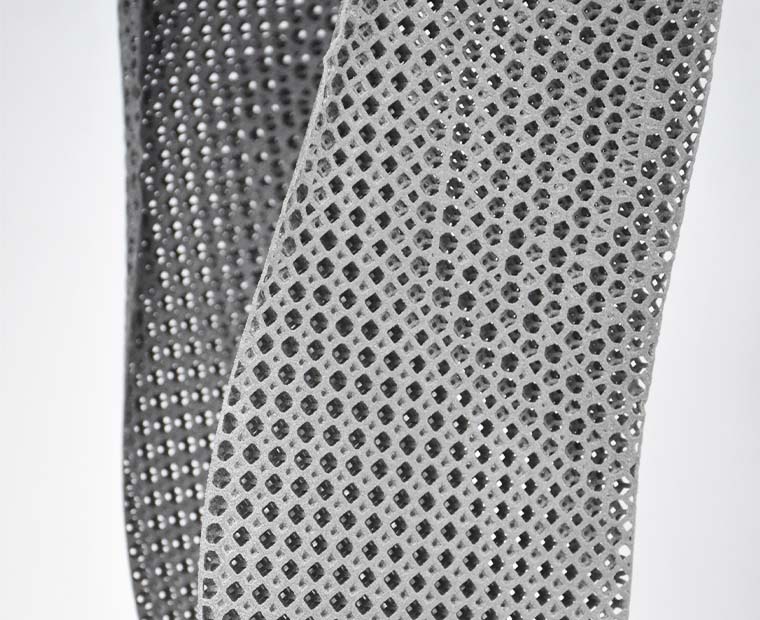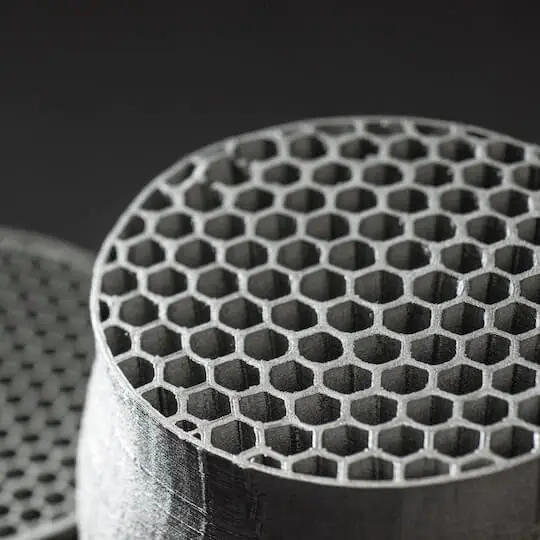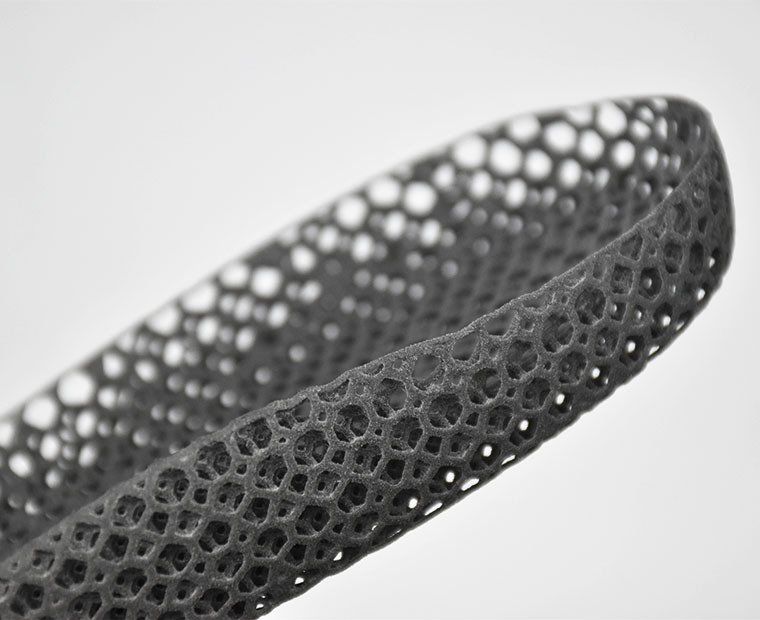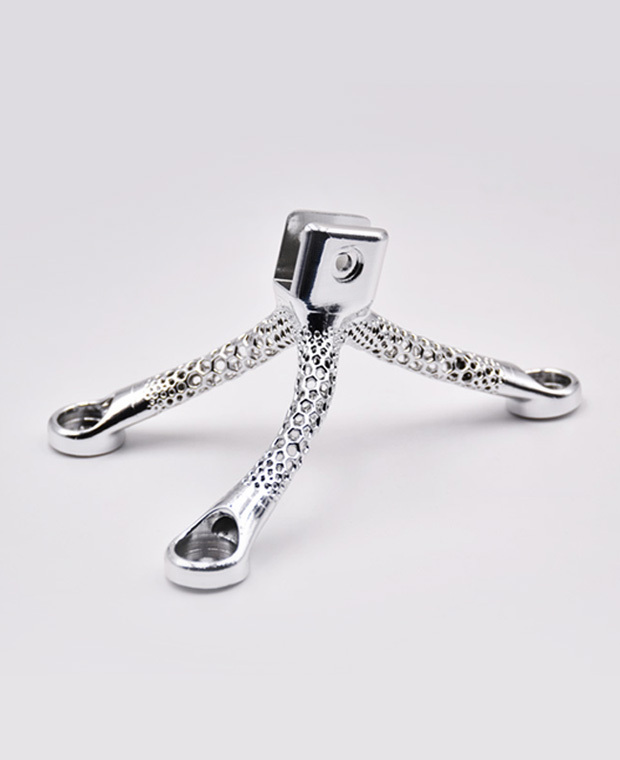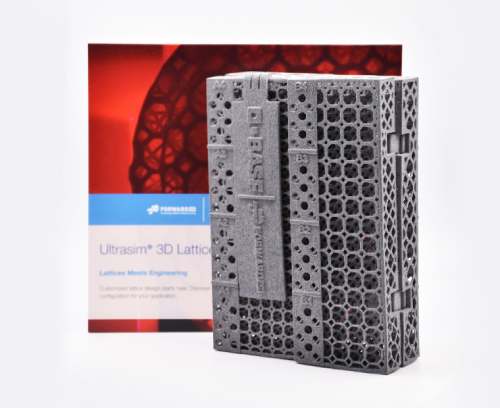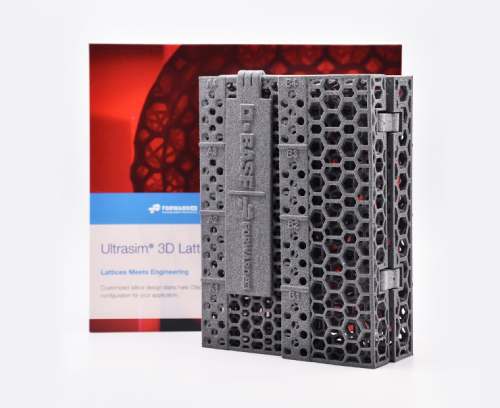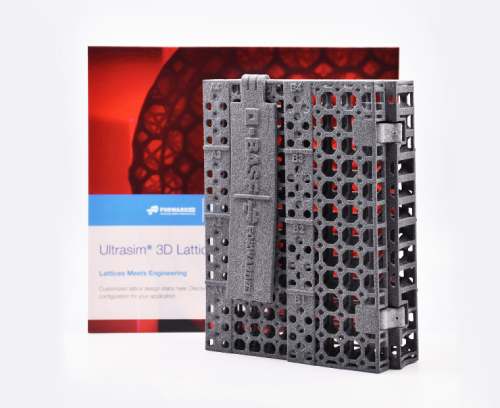A lattice structure is based on a unit cell: a repeating shape that’s copied again and again in different directions, creating a lattice. The type of lattice produced will depend on the shape and arrangement of the unit cells. Lattice types can be grouped under general categories that reflect their main properties.
If you wish to find out more about lattice generation tools in order to create your own lattice structures, read our lattice generation tools guide.
There is a huge variety of sub-types — in fact, lattice structures are the subject of entire mathematical research fields, with rafts of papers being written on their various permutations. These variations are outside the scope of this article; for our purposes, the basics will be fine.
Planar Lattices
The simplest form of lattice, a planar lattice starts with a flat plane made up of two-dimensional cells. These cells are then extruded into three dimensions.
Strut Lattices
A strut lattice is composed of a network of interconnecting beams, which are joined in various configurations based on the unit cell used. The unit cell will typically be cubic, with struts connecting at the faces, edges or vertices of this cube. Understand that the cubic cell used is not a physical structure — it’s a mathematical design element used to construct the lattice of struts, rather than a physical element. Only the struts will actually be printed.
TPMS Lattices
TPMS stands for Triply Periodic Minimal Surface. A TPMS lattice is made up of unit cells generated using a trigonometric equation. Originally described in the late 1800s by German mathematician Hermann Schwarz, TPMS lattice structures have numerous applications in additive manufacturing.
A common example is the gyroid cell, a TPMS unit cell based on the equation sin(x)cos(y) + sin(y)cos(z) + sin(z)cos(x)=0. The gyroid cell consists of all points where the equation is true.
By modifying the equation or using a different trigonometric equation, different unit cell shapes can be created. The lattice structures produced from these shapes are complex and varied, and have a range of unique properties that can be exploited in 3D printing.
Periodic Versus Stochastic Lattices
A periodic lattice structure is one in which each unit cell repeats without any changes throughout the object. A stochastic lattice, in contrast, has unit cells with parameters that vary randomly. Stochastic lattice structures can be advantageous in some design applications. They can make a structure isotropic; that is, they can give it similar properties across all directions.
An example of a periodic lattice in nature might be a honeycomb. This is essentially a planar lattice consisting of hexagonal unit cells of a uniform size and arrangement. On the other hand, some types of bone tissue are composed of stochastic lattices: cells whose size, shape and arrangement vary throughout an area to create a strong structure that resists force from various directions.


 Connect with Google
Connect with Google Connect with Facebook
Connect with Facebook